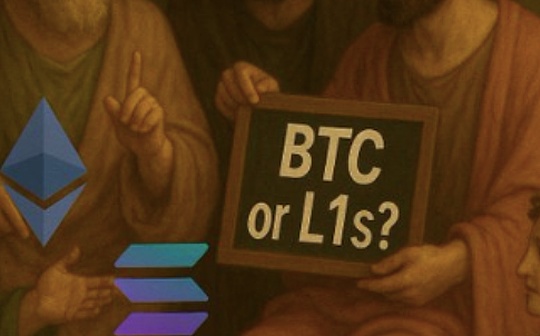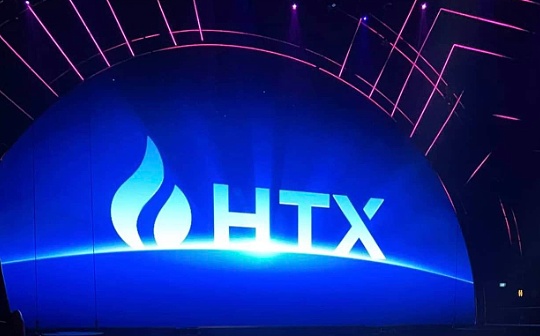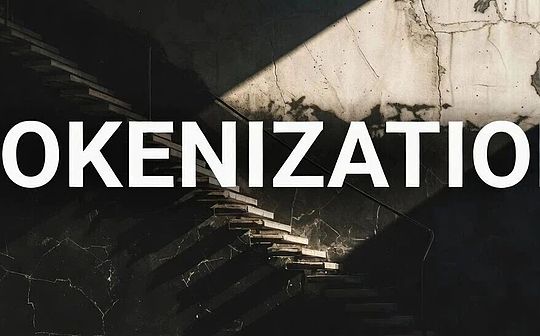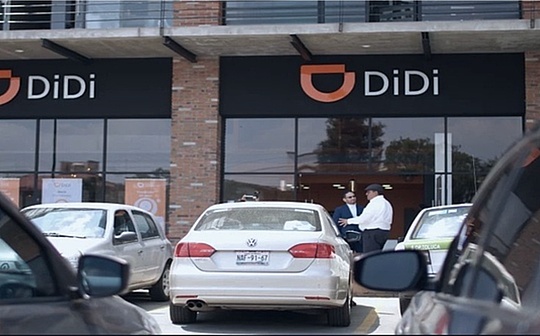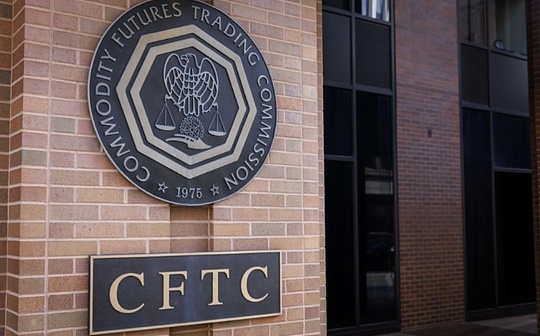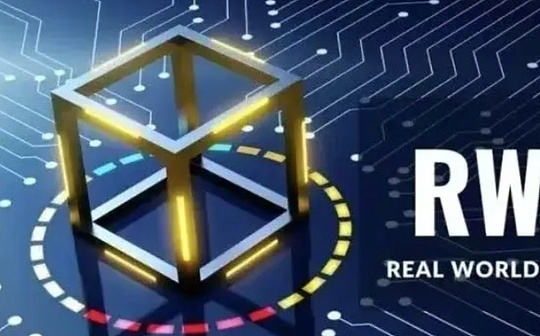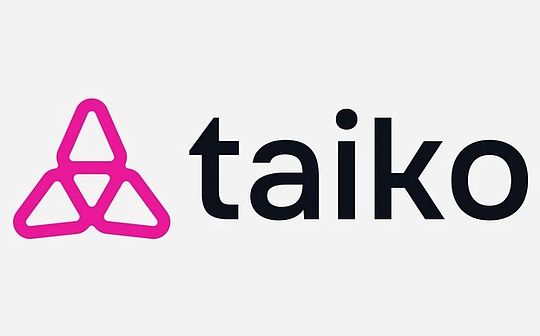
1. Project introduction
TAIKO is a decentralized Ethereum equivalent ZKrollup project, which aims to expand Ethereum through ZKEVM technology expansion.
>
TAIKO is committed to becoming a ZKrolLup that is completely equivalent to Ethereum, so as to expand Ethereum without changing the existing decentralized application (DAPPS).As a ZKrollup, which is completely equivalent to Ethereum, TAIKO allows developers and users to use the powerful features of Ethereum Layer 1 (L1) without changing existing DApps.
>
Main features:
-
ZKEVM type of full compatibility EVM 1:The type of TAIKO 1 ZKEVM is completely compatible with Ethereum, enabling developers to migrate DAPPS between Ethereum and Taiko without worrying about the failure of smart contracts.
-
Open source:The source code of all TAIKO can be viewed, constructed or edited on Github, so that the development of blockchain is not limited to a small team, but also global communities and developers.
-
Complete decentralization:In addition to the high compatibility with EVM, TAIKO also attaches great importance to the decentralization of the agreement. It plans to submit blocks and proofs to generate ZKPS through decentralized proposals and verificationrs.
-
Transaction fee: When users conduct transactions on the TAIKO LAYER 2 network, they need to pay the transaction fee, which will be collected by the block proposal.Block proposals must burn a certain number of TKO tokens and pay Ethereum verifiable ETH to ensure that its block is included in the Ethereum Layer 1 network.
-
Reward mechanism: TKO tokens are used to reward block verifications. These verifiedrs ensure the effectiveness of the transaction by generating and verifying zero -knowledge proof (ZKPROOFS).The transparency of TKO tokens ensures that the user experience is similar to an experience on the Ethereum network.
-
Margin system: TKO tokens are used for BCR and BBR margin systems to ensure the integrity and timelyness of network operations.The confiscated margin will not be lost, but is redirected to the TAIKO TROASURY to L1.
-
Governance: TKO token holders can participate in network governance, affect network upgrades and management TAIKO TREASURY, and keep the network’s unparalleled nature on L1 and L2.
-
Total supply: 1 billion TKO tokens, with 18 decimals.
-
Token management: The casting or destruction of the TKO token is strictly carried out in accordance with the governance regulations to ensure that the supply of supply is transparent and reflects the consensus of tokens.
-
Dao treasury: 20%
-
Guardian Prover Bonds: 2%
-
Grants & amp; Retropgf: 5%
-
Trail Blazer/Pioneer (Trailblazer) airdrop: 10%
-
Agreement guild airdrop: 1%
-
Cyntinch: Gallout 5%
-
Liquidity and market: 5%
-
investor: 11.62%
-
Taiko Labs/core team: 20%
-
TAIKO Foundation Reserve: 16.88%
-
Taiko official Prover Bonds: 1.5%
-
TAIKO Lab: A specialized R & D team focuses on promoting the TAIKO agreement.
-
TAIKO TREASURY: The income funded by the Taiko protocol, which is the financial resources of the project.
-
TAIKO DAO: The organization consists of the holder of the TAIKO token (TKO) to exercise the right to vote and manage all aspects of the TAIKO protocol.This includes the decision on the upgrade of smart contracts, TKO parameters and other protocols.
-
Taiko Foundation: As a legal entity in the Cayman Islands, the Taiko Foundation is responsible for supervising the growth and development of the Taiko agreement and its broader ecosystem.The foundation specializes in TAIKO DAO and token holders to provide financial support for technical development, ecosystem expansion, maintenance, service providers, event management and other measures through gifts or replacement financing methods.
-
The Security Council of Taiping Island: The Personal and entity selected by the Security Council is selected by the Taiping Island Affairs Bureau. It is responsible for the rapid action according to the needs of Taiping Island.The main task of the Security Council is to maintain the security and integrity of TAIKO, and authorize them to implement or modify this goal to achieve this goal.
-
Amount: $ 22 million
-
time: Including two rounds of financing announced on June 8, 2023
-
investor: Dedicated by Sequoia China and Generation Ventures. Participants include Bai Capital, GGV Capital, GSR Markets, iOSG Ventures, Mirana Ventures, Okx Ventures, Skyland Res, Token Bay Capital, Yunqi Partners, and other investors and well -knownContributor.
-
Amount: $ 15 million
-
time: March 2, 2024
-
investor: Leaded by LightSpeed, Hashed, Generation Ventures, and Token Bay Capital. Other investors include Wintermute Ventures, Presto Labs, Flow Traders, Amber Group, OKX Ventures, GSR and WW. Ventures.
-
No authority and dispersion:TAIKO stands out as a pioneering -based summary solution. It stands out by eliminating the concentrated pronunculus and relying on the Ethereum verification device for transactions and block sorting.
-
Seamless developer experience:TAIKO’s use of ZK-EVM (Type 1 ZK-EVM) ensures that the compatibility with Ethereum executes standards has laid the foundation for the scalable Ethereum ecosystem.
-
High adaptability and future:As a controversial ROLLUP, TAIKO authorizes the application chain to customize its certification system, and accepts more effective proof as technology progress, without having to modify the core protocol of TAIKO.
-
Powerful community support: TAIKO’s multiple test networks (Alpha1, Alpha2 and Alpha3) encouraged community members to participate. Through interaction with the test network, users can obtain airdrop qualifications.This not only increases the activity of the community, but also helps verify and optimize network design.
-
Broadly partner: TAIKO has established strategic cooperation relations with many leading blockchain projects and companies to jointly promote the development of ecosystems.These partners provide important support in technology research and development, marketing and community construction.
-
Sufficient funds: TAIKO raised a total of $ 37 million through multiple rounds of financing, and received support from many well -known investment institutions including LightSpeed, Faction, Hashed, Generation Ventures and Token Bay Capital.Successive funds provide solid guarantee for technology research and development, team expansion and infrastructure construction.
-
Fierce competitive environment: In the field of Ethereum Layer 2 extended solution, there are many powerful competitors, such as ZKSYNC, Starknet, Loopring, Optimism, and Arbitrum.These projects are also actively developing their technology and ecosystems, and TAIKO is facing fierce market competition pressure.
-
Competitive advantage: Although TAIKO has certain advantages in technological innovation and community construction, it is still a challenge to stand out among many competitors.
-
Technical complexity: ZKEVM and Zkrollup technology itself has high complexity, and requires a lot of R & D investment and technical support.Realizing completely decentralized and efficient zero -knowledge proof still faces technical challenges.
-
Main Network Release: TAIKO’s main network is planned to be released at the end of the first quarter of 2024. Although multiple testing networks were successful, the main network’s smooth launch and widespread application need to be further verified.
-
User experience: Although TAIKO provides many technical advantages, how to improve the user experience and attract more users and developers to use its network is still an important issue.Especially in terms of user habits and developer tools, it is necessary to continue to optimize.
-
Education and promotion: More education and promotion activities need to help users and developers understand and use TAIKO networks, especially in complex zero -knowledge proof technology and decentralized governance models.
2. Core technical structure
2.1ZKEVM circuit
ZKEVM (zero -knowledge Ethereum virtual machine) circuit is one of the core components of the TAIKO technical architecture.It uses zero -knowledge proof (ZKPS) to verify the accuracy and integrity of the Ethereum virtual machine (EVM) computing.Through ZKEVM, TAIKO can expand Ethereum without changing existing smart contracts and decentralized applications (DAPPS), while maintaining the security, decentralization and compatibility of Ethereum.
>
2.1.1Function and characteristics
1. Zero Knowledge Proof (ZKPS)
Verification transaction: The ZKEVM circuit uses ZKPS to verify the correctness of the transaction without leaking the specific data of the transaction.In this way, the amount of data processing on the main network of Ethereum can be reduced, thereby reducing transaction costs and increasing transaction speed.
Confidentiality: ZKPS ensures the privacy of transactions. Only verified proofs will be submitted to the main network of Ethereum.
2.Full compatibility EVM operating code
Support all EVM operating codes: ZKEVM circuit fully supports all EVM operating codes, which means that developers can seamlessly migrate their smart contracts and DAPPS to TAIKO without any modifications.
Keep Ethereum compatibility: This high -level compatibility allows the existing Ethereum development tools and ecosystems to directly use it on TAIKO, which greatly facilitates developers.
3..Decentralization and security
Decentralized verification: ZKEVM circuit supports decentralized verification model, and anyone can participate in generating and verifying zero knowledge proof.This decentralization method ensures the safety and integrity of the system.
Ethereum L1 validator: TAIKO’s ZKEVM circuit uses Ethereum Layer 1 verifications for transaction sorting to ensure that inherit the decentralization and security attributes of Ethereum.
4. 4..High -efficiency and scalability
Reduce data processing quantity: Through the execution of transactions on Layer 2 and generating zero -knowledge proof, the data processing volume on the main network of Ethereum is reduced, thereby improving the efficiency and scalability of the transaction.
Quickly generate ZK proof: The design of the ZKEVM circuit optimizes the generating speed of ZK to ensure that a large number of transactions can be dealt with efficiently.
5.Smart contracts and protocol rules
Smart contract execution: The ZKEVM circuit supports the execution of smart contracts to ensure the programming and flexibility of Ethereum.These smart contracts are responsible for verifying the ZK certification and forced the implementation of the rules of the agreement.
Agreement verification: The ZKEVM circuit is integrated with the Ethereum L1 to ensure that all proof and transaction status have been strictly verified to maintain the consistency and security of the system.
2.1.2Working principle
1. 1.Transaction execution and data collection
The transaction first executed on Layer 2 to generate the corresponding transaction data.
These transaction data will be collected and prepared to generate the ZK proof.
2.Zero knowledge proof
The ZKEVM circuit uses ZKSNARKS or ZKSTARKS technology to generate zero knowledge proof, which proves that the correctness of the transaction can be verified without leaking the specific content of the transaction.
After the proof is generated, the proof and related data will be submitted to the Ethereum L1.
3..Verification and status update
Ethereum L1 verifications verify the zero -knowledge certificate submitted to ensure the effectiveness of the proof.
Once proved to be verified, the transaction status will be updated online on Ethereum main online to ensure that all participants see the consensus results.
2.2Layer 2 rollup node
Layer 2 ROLLUP node is a key component in the TAIKO technical architecture. It is responsible for managing and executing transactions on Layer 2, and interacting with Ethereum Layer 1 (L1).Through Layer 2 Rollup technology, TAIKO can improve the transaction throughput of Ethereum, reduce transaction costs, and maintain decentralization and security.
>
2.2.1Function and characteristics
1. 1.Data collection and transaction execution
Transaction execution: Layer 2 Rollup node executes transactions on Layer 2. These transactions are first processed in the Layer 2 network, reducing the direct burden on the Ethereum main network.
Data collection: Node collection data transmitted from Ethereum Layer 1, and transaction processing and status update based on these data.
2.State management
State display: After each transaction execution, the Layer 2 Rollup node will be updated and displayed the transaction status to ensure that all participants see the consistent status information.
State: After managing the state of the transaction execution, ensure the consistency and data integrity of the entire network.
3..Agreement rules execute
Agreement verification: Layer 2 RollUP node implements transactions and verification processes according to the rules of the TAIKO protocol.These rules ensure the effectiveness of the transaction and the security of the network.
Smart contract support: The node can execute the smart contract deployed on the Ethereum Layer 1, and use these contracts to perform data transmission and ZK certification verification.
4. 4..High -efficiency and scalability
Increase throughput: Through the execution of transactions on Layer 2, the network transaction processing capacity has been greatly improved, and the congestion of the Ethereum main network has been reduced.
Reduce costs: Treatment transactions on Layer 2 can significantly reduce transaction costs, making small transactions more economical and feasible.
5.Decentralization and security
Decentralized verification: Layer 2 RollUP node supports decentralized verification model models. Anyone can participate in the verification of transactions and ZK certification generation to ensure the decentralization and security of the network.
Data transmission: The node is responsible for transmitting the transaction data on Layer 2 to Ethereum Layer 1 and updated according to the feedback of L1.
2.2.2Working principle
1. 1.Data collection and transaction execution
Receiving transaction: The node receives the transaction submitted by the user on Layer 2 and executes these transactions in accordance with the agreement rules.
State update: After the transaction is executed, the node updates the transaction status and maintains the latest status information on Layer 2.
2.Zero knowledge proof
Generate ZK proof: The node generates zero -knowledge proof of each transaction to ensure the correctness and privacy of the transaction.
Submit certificate: The generated ZK proof and related data will be submitted to Ethereum Layer 1 for L1 verifications to verify.
3..Verification and status update
L1 verification: Ethereum Layer 1 validator verifies the zero -knowledge certificate submitted to ensure the effectiveness of the transaction.
Status synchronous: Once proved to be verified, the Layer 2 Rollup node will be updated in synchronization according to the feedback of L1 to ensure the consistency of the entire network.
Advantages and application scenarios:
1. 1.Improve the scalability of Ethereum
By handling a large number of transactions on Layer 2, TAIKO’s Layer 2 Rollup node can significantly improve the scalability of the Ethereum network and meet higher transaction needs.
2.Reduce transaction costs
The execution of transactions on Layer 2 and generating ZK proves have reduced their dependence on Ethereum main network, thereby reducing the transaction costs, especially suitable for application scenarios for high -frequency small transactions.
3..Enhance security and privacy
Zero -knowledge proof technology ensures the privacy and security of the transaction, avoids the leakage of transaction data, while maintaining the decentralized characteristics of the network.
2.3TAIKO protocol
The TAIKO protocol is also a core component of the TAIKO technical architecture. It defines and executes the rule of Layer 2 Rollup to ensure the correctness of the transaction and the security of the network.Through smart contracts and decentralized verification, the TAIKO protocol achieves high -efficiency expansion of Ethereum, while maintaining its decentralization and security characteristics.
>
2.3.1Function and characteristics
1. 1.Protocol Definition
Rule settings: The TAIKO protocol defines all the operating rules of Rollup, including transaction processing, verification and status update.All transactions must follow these rules to ensure the consistency of the network.
Smart contract execution: Agreement is implemented through the smart contract deployed on Ethereum to ensure that all rules and operations are open and transparent.
2.Transaction verification and status update
Transaction verification: After each transaction is submitted, the TAIKO protocol will be verified according to the predefined rules to ensure the effectiveness and correctness of the transaction.
State update: After the verification is completed, the agreement will update the transaction status of Layer 2 and transmit the relevant data to Ethereum Layer 1 to ensure that the status is synchronized and consistent.
3..Decentralization and security
Decentralized verification: The TAIKO protocol supports decentralized verifications models, and anyone can participate in the verification process.This decentralization method enhances the security and integrity of the network.
Zero knowledge certificate: Agreement uses zero -knowledge proof technology (ZKSNARKS or ZKSTARKS) to verify the transaction without exposing the specific content of the transaction to ensure the privacy and security of the transaction.
4. 4..Data transmission and processing
Data submission: Transaction data and generated ZK certificates will be submitted to Ethereum Layer 1 for L1 verifications to verify.
Data processing: After the L1 verification, the agreement updates the state of Layer 2 based on the feedback to ensure that all participants see the consistent transaction results.
5.Smart contract function
Data transmission mechanism: Smart contracts are responsible for passing transaction data and ZK certification between Layer 2 and Layer 1 to ensure the integrity and consistency of the data.
Agreement verification: Smart contracts are also responsible for verifying the ZK certification to ensure the effectiveness and correctness of the transaction.
6.Governance and community driver
Decentralization Autonomous Organization (DAO): The governance of the TAIKO protocol is managed by TAIKO DAO, and DAO is composed of TKO token holders. They use voting to decide the major updates and changes of the protocol.
Community participation: The governance and development of the agreement rely on the participation and contribution of the community to ensure that the decision -making of the agreement is transparent, fair and tolerant.
2.3.2Working principle:
1. 1.Transaction submission and execution
The user submits a transaction on Layer 2, and the transaction first executed on the Layer 2 Rollup node.
After the transaction is executed, the corresponding transaction data and status update is generated.
2.Zero knowledge proof
The generation of zero -knowledge proof to verify the correctness of the transaction, these proofs will not expose the specific content of the transaction to ensure privacy.
The generated ZK proof and transaction data will be submitted to Ethereum Layer 1.
3..L1 verification and status update
Ethereum Layer 1 verifications verify the zero -knowledge certificate submitted to ensure the effectiveness and correctness of the transaction.
After the verification is passed, the status of Layer 2 will be updated according to the feedback of L1 to ensure the consistency and security of the entire network.
4. 4..Governance and protocol update
TAIKO DAO determines the update and change of the agreement by voting to ensure the participation and transparent governance of the community.
All protocol updates will be implemented through smart contracts to ensure the openness and transparency of the rules.
2.3.3Advantages and application scenarios
1. 1.Improve the scalability of Ethereum
Through Layer 2 RollUP technology and zero knowledge proves, the TAIKO protocol has significantly improved the scalability of the Ethereum network, can handle more transactions, and meet higher transaction needs.
2.Reduce transaction costs
Treatment of transactions on Layer 2 reduces its dependence on Ethereum main network, thereby reducing the transaction costs, especially suitable for application scenarios for high -frequency small transactions.
3..Enhance security and privacy
Zero -knowledge proof technology ensures the privacy and security of the transaction, avoids the leakage of transaction data, while maintaining the decentralized characteristics of the network.
4. 4..Community -driven and transparent governance
Through TAIKO DAO, community members can participate in the governance and decision -making of the agreement to ensure that the development direction of the agreement meets the interests and needs of the community.
2.4Based on competitive summary (BCR)
>
Based on a key innovation in the TAIKO protocol based on the Base Competitive Rollup, which aims to enhance the decentralization and security of the network.The following is a detailed introduction to BCR:
2.4.1Core concept
BCR is an innovative Layer 2 solution, which aims to improve the decentralization and security of the blockchain network through a competitive mechanism.In the BCR model, multiple participants can compete for proposal and verify blocks, thereby eliminating the control of a single entity on the network.
2.4.2Working mechanism
1. 1.Competitive proposal
Proposers: Anyone can be a proposal and submit the block proposal.The proposal needs to pack a user transaction and generate zero -knowledge proof (ZKPROOFS).
Proposal competition: Multiple proposals can compete for blocks at the same time to ensure that the generation and submission process of each block is decentralized, and there is no single centralized control point.
2.Verification process
Verifiers (Verifiers): Verifications are responsible for the block and zero knowledge proof submitted by the proposal.They ensure the security of the network by verifying the correctness and legality of the transaction.
Competitive verification: Multiple authenticants can compete for verification blocks, which increases the security of the network, because the competition between verifications ensures the accuracy and transparency of the verification process.
2.4.3BCR advantage
1. 1.Enhanced decentralization
Open participation: The BCR model allows anyone to participate in the block proposal and verification, eliminating the dependence on a minority entity, and enhancing the decentralization of the network.
Anti -examination: Because there are multiple proposals and verifications competition, it is difficult for any single entity to review or control the network.
2.Improving security
Multiple verification: Through the competitive verification mechanism, multiple verifications independently verify the block, which ensures the reliability and security of the verification process.
Reduce single -point failure: The BCR model reduces the risk of single -point failure, because the operation of the network does not depend on a single proposal or verified person.
3..Economic inspiration
fair play: Proposal and verificationrs obtained economic rewards through competition, this mechanism ensures that participants have the motivation to provide honest and efficient services.
Cost burning: The proposal needs to burn a certain amount of TKO token to submit the block, which helps control the token supply and stabilize the token value.
2.5Summary of the booster (BBR)
Based Based Booster Rollup is a key component of the TAIKO protocol. It aims to further expand the capacity of Ethereum network by improving transaction execution and storage efficiency.The design goal of BBR is to create a seamless user and developer experience, so that transactions can be executed like on Layer 1 (L1), while maintaining their storage on Layer 2 (L2).
>
2.5.1Core characteristic and working principle
1. 1.Double -layer structure
Executive separation from storage: BBR realizes the double -layer structure of transaction execution and storage. This design allows transactions to perform efficiently on L2, while maintaining necessary security and decentralization on L1.
Seamless integrated with L1: Through this double -layer structure, BBR enables smart contracts to maintain the same address on L1 and all BBR, simplifying the deployment and interaction process.
2.Compatibility and scalability
Completely compatible with Ethereum: BBR is completely compatible with the existing architecture of Ethereum, including the HAS cost of hash functions, status trees and each operating code.This means that the existing Ethereum smart contract and DAPPS can be seamlessly migrated to the BBR.
Enhanced scalability: The design goal of BBR is to improve the scalability of Ethereum, so that the transaction processing speed is faster and the cost is lower, thereby supporting larger users and applications.
3..Booster function
Versatility: BBR’s booster function can enhance the summary of any type. Whether it is optimistic summary or zero -knowledge summary, it can use the expansion capacity provided by BBR.
Enhance the expansion of Ethereum: Through BBR, any summary can directly enhance the expansion of Ethereum, enabling it to handle more transactions and more complex applications.
2.5.2Technical details
1. 1.Consistency of smart contracts
Address consistency: BBR ensures that the smart contract addresses on L1 and L2 remain consistent, which means that the smart contract deployed by developers on L1 can be seamlessly operated on L2, simplifying the development and deployment process.
Simplified interaction: The interaction process of users and developers on different layers is simplified, ensuring the consistency of the user experience and the convenience of the development process.
2.Economic incentive mechanism
Cost structure: The cost of the BBR cost is reasonable to ensure that the transaction cost is sufficient to encourage the use of users and developers. At the same time, it is necessary to ensure that the economic incentive mechanism of the network is strong enough to maintain the enthusiasm of the participation of verifications and proposals.
Reward distribution: Through a reasonable reward distribution mechanism, BBR ensures that all participants get fair incentives in the network, thereby maintaining the decentralization and security of the network.
2.5.3Superiority
1. 1.Improve transaction efficiency
Quick trading processing: By performing transactions on L2, BBR has significantly increased the transaction processing speed and reduced the burden on Ethereum main network.
Reduce transaction costs: The execution of transactions on L2 has significantly reduced transaction costs, making small and high -frequency transactions more economical and feasible.
2.Enhance network security
Decentralized verification: BBR adopts a decentralized verification mechanism to ensure the security and decentralization of the network, avoiding single -point faults and review risks.
Multiple verification mechanism: Through multiple verification mechanisms, BBR provides higher security assurance to ensure the correctness and legality of all transactions.
3..Optimize user experience
Seamless user experience: The design of the BBR ensures that the user experiences the consistency with L1 when using the L2 network, and there is no need to worry about complex technical details.
Easy development and deployment: Developers can use the existing Ethereum tools and infrastructure to easily develop and deploy smart contracts and DApps on BBR.
3. TKO tokens
>
TKO is the native currency of the TAIKO network. It is designed to reward block authentication and as part of the transaction fee in the TAIKO network.
3.1Token function
3.2Token supply
3.3Token distribution
>
3.4Token airdrop
>
1. 1.Test network interactionThe
In order to increase the opportunity to get TKO token airdrops, users can participate in the TAIKO test network to increase the possibility of airdrops by interacting with its test network.
At present, TAIKO has conducted many testing networks. The latest test network is Alpha3, which aims to test the interaction between the proposal and the verification person, as well as the new cost and incentive system.
2.Participate in stepsThe
Add the network: Add the Sepolia network and TAIKO’s Alpha3 test network to your Metamask wallet.
Get the test network ETH: Get Sepolia Eth from the faucet.
Casting and bridge tokens: Connect your wallet, cast Bull and Horse tokens, add these tokens to your Metamask, and then connect ETH, BLL, and Horse from the Sepolia Bridge to TAIKO.
>
Exchange and provide liquidity: In TAIKO’s exchange test, import the tokens of TAIKO, exchange and provide some token liquidity.
>
Developer task: For users with certain development experience, they can deploy and verify contracts, or build DAPP according to the guide.
Complete task: Visit the Galxe page of TAIKO, complete tasks such as transfer, exchange funds, access page or answering tests, and earn points. These points may be converted into future rewards.
>
4. Community and ecosystem development
According to data from TAIKO’s official website, more than 90 projects have been incorporated into the ecosystem.
>
These projects cover various departments, including wallets (with significant EVM native wallets), NFT markets (with single -chain and multi -chain options), infrastructure (such as RPC and Oracle services) and DEFI applications.As a Type 1 Layer2 solution, TAIKO provides seamless migration paths for Ethereum DAPPS, which only needs to be rarely or even need to be adjusted.
In addition, the TAIKO team also introduced the test token faucet, the official token and the NFT bridge, as well as the exchange function and browser.
As of May 23, 2024, TAIKO has 933,000 fans on the X (Twitter) platform, and Discord has accumulated 9.094 million members.In contrast, the number of fans of Optimism is 640,000, and the number of fans of Arbitrum is 980,000.TAIKO’s community shows significant growth and participation.
5. Team/financing situation
5.1team
>
The TAIKO team is composed of experienced blockchain experts and engineers. They have deep background and rich experience in blockchain technology, encryption and distributed systems.
The co -founder Daniel Wang was the founder and former CEO of Loopring. Loopring is a decentralized trading agreement based on Ethereum, using zero -knowledge certification technology to expand.As a senior person in the blockchain industry, Daniel has rich experience in the field of blockchain technology and decentralized finance (DEFI).In TAIKO, Daniel Wang is responsible for overall strategic planning and technical guidance to promote the development and innovation of the project.
Brecht Devos is the head of co -founder and zero -knowledge research and development team. He was a former chief architect of Loopring and has deep encryption and blockchain technical background.He has rich practical experience in the design of zero knowledge proof technology and blockchain protocol.In TAIKO, Brecht leadership zero -knowledge research and development team focuses on the research and development and implementation of Zkrollup and ZKEVM technology.
Organizational structure
In order to ensure the effective operation and regulatory requirements of the TAIKO network, TAIKO has established a number of related entities and organizations, and several key entities play a key role:
5.2Financing
>
First financing and follow -up financing
Latest financing
These funds are used for deployment and optimization of multiple test networks, including Alpha1, Alpha2 and Alpha3 test networks to verify and improve network design.Prepare the main network of the first quarter of 2024, including infrastructure construction and technical support.
6. Project evaluation
6.1Track analysis
TAIKO project belongs toEthereum Layer 2 extension solutionThe track, specificallyzkrollup technologyfield.TAIKO provides efficient, secure and decentralized blockchain expansion solutions through zero -knowledge Ethereum virtual machine (ZKEVM) technology, which aims to solve the scalability problem of Ethereum and maintain complete compatibility with Ethereum.
In the field of Ethereum Layer 2 extension solution, especially ZKrolLUP technology, there are the following similar items:
1. 1.ZKSYNC
Brief introduction: ZKSYNC is a Ethereum Layer 2 extension solution based on ZKrollup technology, which aims to provide fast and low -cost transactions, while maintaining Ethereum’s security and decentralization.
Characteristic: Completely compatible with Ethereum, support smart contracts, focus on user experience and developer friendliness.
2.Starknet
Brief introduction: Starknet is a Layer 2 extension solution based on the LAYER 2 extension developed based on Stark (SCALABLE Transparent Argument of Knowledge) technology.
Characteristic: Use STARK technology to prove zero -knowledge, provide high throughput and low -delay transactions, and support complex smart contracts.
3..Loopring
Brief introduction: LOPRING is a ZKrolLup project focusing on decentralized transactions (DEX) protocols, and is committed to providing efficient trading experience and low costs.
Characteristic: Through ZKrolLUP technology to achieve high -throughput decentralized transactions to ensure the security and privacy of user assets.
6.2Project advantage
Financing support
6.3Lack of projects
1. 1.Market competition
2.Technical implementation
3..User adoption
7. Conclusion
All in all, the TAIKO project provides high -efficiency, secure, decentralized expansion solutions for Ethereum through innovative Zkrollup and ZKEVM technology.With the support of multiple rounds of financing and the governance model of decentralized autonomous organizations (DAO), TAIKO has made significant progress in technology research and development and community construction.Despite market competition and technological challenges, TAIKO is expected to occupy an important position in the field of blockchain expansion solutions through continuous optimization technology and expanding ecosystems, providing users and developers with a highly efficient and secure blockchain environment.


